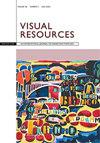Notes from the Periphery: History and Methods
IF 0.3
0 ART
引用次数: 4
Abstract
There is still no consensus on what (or when and where) the periphery is/has been. The centre–periphery opposition, criticised for its hierarchical and binary nature, has frequently been mapped onto the West–East divide, and scholars have questioned the applicability of the term from what it seems like a Eurocentric point of view. These notes reflect on the concept of periphery and its historiography, seeking to disentangle the periphery from its exclusive (and primarily geographical) association with the centre(s), using it instead to undercut the categories that have variously shaped and constrained the art historical discipline. It proposes the re-imagining of the study of the periphery as a fluid set of practices, with a strong association to fundamentally unequal power configurations, while assuming a wide range of methodological and theoretical positions.外围笔记:历史与方法
对于外围国家是什么(或何时何地),仍然没有达成共识。因其等级制度和二元性而受到批评的中边缘反对派经常被映射到东西方分歧上,学者们从欧洲中心的角度质疑这个词的适用性。这些注释反映了边缘及其史学的概念,试图将边缘从其与中心的排他性(主要是地理性)联系中剥离出来,转而用它来削弱塑造和约束艺术历史学科的类别。它提出将外围研究重新想象为一组流动的实践,与根本不平等的权力配置有着强烈的联系,同时采取了广泛的方法论和理论立场。
本文章由计算机程序翻译,如有差异,请以英文原文为准。
求助全文
约1分钟内获得全文
求助全文

 求助内容:
求助内容: 应助结果提醒方式:
应助结果提醒方式:


